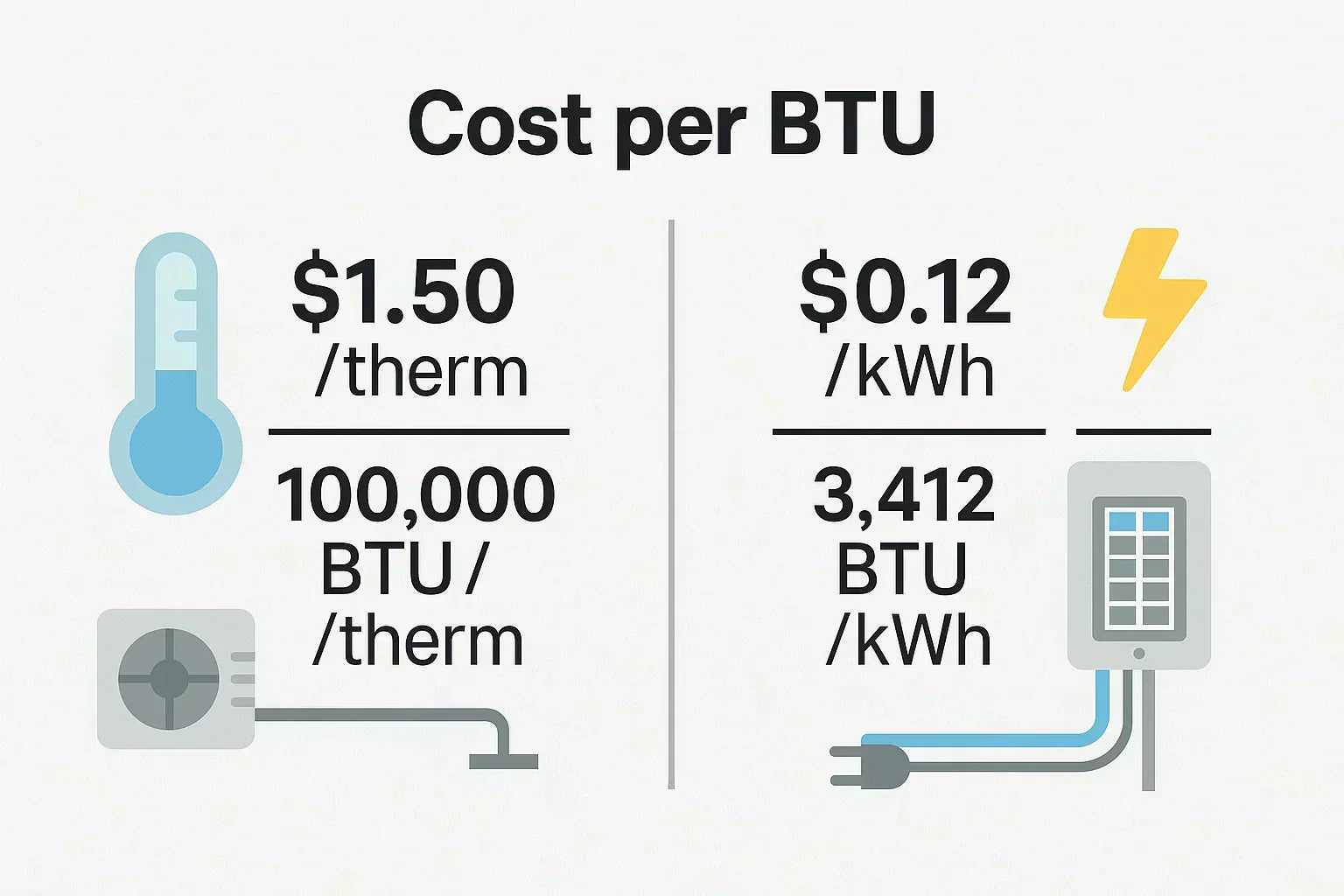When choosing between a gas furnace and an electric furnace, most homeowners focus on the upfront price or efficiency rating. But if you want to make the smartest long-term investment, don’t stop there. You need to consider what you’ll pay every month to run it—and that starts with understanding your local utility rates.
Whether your region has affordable natural gas or relies heavily on electricity, your heating bills can vary widely depending on which fuel type you use. In this guide, we’ll break down how utility rates should influence your decision—and how to compare heating costs on a true apples-to-apples basis.
Why Energy Pricing Matters When Choosing a Furnace
Heating your home is often your biggest winter expense—especially in colder climates where the system runs almost nonstop from October to March.
But here's the catch: even a high-efficiency furnace can become a money pit if your fuel source is expensive in your region.
That’s why it's so important to compare:
-
Your natural gas vs. electricity rates
-
How much heat each fuel provides (measured in BTUs)
-
How efficiently your furnace converts that fuel into usable heat
As the U.S. Energy Information Administration (EIA) explains, energy costs vary widely from state to state—so what’s affordable in Ohio might be costly in California.
Comparing Natural Gas and Electricity Rates
Typical Residential Price per Unit
Here’s a snapshot of average fuel prices in the U.S. as of early 2025:
| Fuel Type | Avg. Price (U.S.) | Energy Output |
|---|---|---|
| Natural Gas | $1.50 per therm | 100,000 BTUs per therm |
| Electricity | $0.17 per kWh | 3,412 BTUs per kWh |
-
Natural gas is generally cheaper per unit of heat, especially in colder northern states.
-
Electricity tends to cost more, particularly during winter peaks—but it may be offset by cleaner generation or incentives in some regions.
To check the rates in your area, visit the EIA’s state energy profiles, which include historical and current pricing data for both fuels.
Fuel Efficiency and Cost per BTU
Looking at price per unit is helpful—but the real way to compare gas and electric heating is by cost per BTU of delivered heat.
How to Calculate Cost per BTU
Let’s assume you’re heating a home that requires 1 million BTUs.
-
Gas furnace at 95% efficiency:
-
1,000,000 ÷ 95,000 (usable BTUs per therm) = 10.53 therms
-
10.53 × $1.50 = $15.80 to heat the home
-
-
Electric furnace (100% efficiency):
-
1,000,000 ÷ 3,412 = 293.1 kWh
-
293.1 × $0.17 = $49.83 to heat the home
-
Even though electric resistance heat is technically 100% efficient, natural gas still delivers heat at a lower cost per BTU in most markets—especially in states with low gas prices.
For help with the math, Energy.gov offers tools to estimate home heating and appliance usage based on fuel type.
When Electric Makes Sense (Even with Higher Rates)
There are cases where electric furnaces (or better yet, electric heat pumps) still come out ahead—even in areas with high electricity prices.
Reasons Electric Wins:
-
You live in a clean-grid state (like Washington, California, or Vermont), where electricity is heavily sourced from renewables.
-
Your home is in an all-electric subdivision, and running a new gas line would be expensive or impossible.
-
You’re pairing your furnace with solar panels, which can offset high winter electricity costs.
-
Your utility offers time-of-use rates, where you can program your thermostat to heat during cheaper off-peak hours.
States with strong clean energy policies often provide incentives for homeowners to upgrade to electric systems. You can explore available programs through DSIRE, a comprehensive database of U.S. energy rebates and tax credits.
When Gas Is the Better Deal
In many parts of the U.S.—especially the Midwest, Mountain West, and Northeast—natural gas remains the more cost-effective fuel for home heating.
Gas makes more sense when:
-
Your region has low gas rates and cold winters
-
Your electric rates spike during winter demand
-
You already have a functioning gas line and venting system
-
You prefer the rapid heat-up time of gas systems
Additionally, many homeowners still value gas appliances for resilience during outages (if paired with a backup generator), as well as the lower monthly heating costs during deep cold spells.
How to Analyze Your Local Rates
Before committing to a furnace type, take 10 minutes to analyze your past utility bills. Here’s how:
Step 1: Pull the last 12 months of your gas and electric bills
-
Note the price per therm and per kWh
-
Calculate how many units you used during peak heating months
Step 2: Estimate heating-specific use
If you don’t have a smart meter, tools like the ENERGY STAR Home Energy Yardstick can help estimate how much of your energy is used for heating.
Step 3: Compare cost per BTU delivered
Use the formulas mentioned above to determine how much you’re spending per unit of usable heat. This will help you make a data-backed furnace decision that aligns with your utility reality.
Final Thoughts: Let Your Rates Guide Your Furnace Choice
It’s easy to get caught up in efficiency percentages or brand names—but don’t forget that your monthly utility rates drive your real-world heating costs.
✅ Choose gas if you have low natural gas prices, harsh winters, and existing infrastructure.
✅ Go electric if your grid is clean, you qualify for incentives, or you're pairing your system with solar.
The smartest move is the one that balances comfort, cost, and carbon footprint—and your utility rates are the key starting point.
👉 Still comparing your options? Start here:
Gas vs. Electric Furnaces: Which is Better?
👉 Next in the series:
Cold Start: Which Furnace Heats Up Faster in Freezing Weather
Alex Lane
Your Home Comfort Advocate







